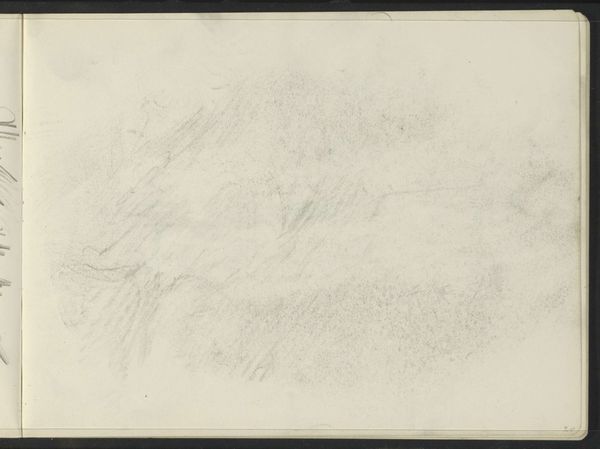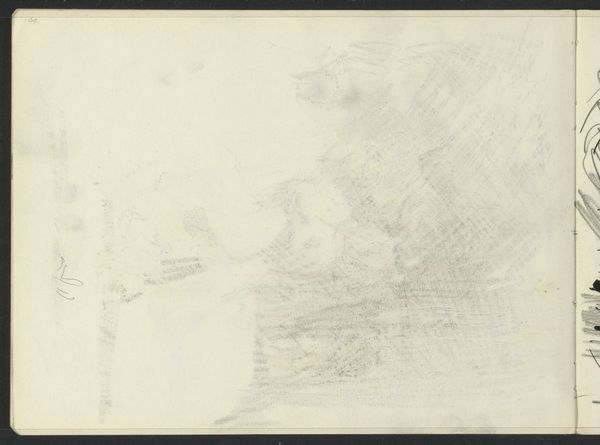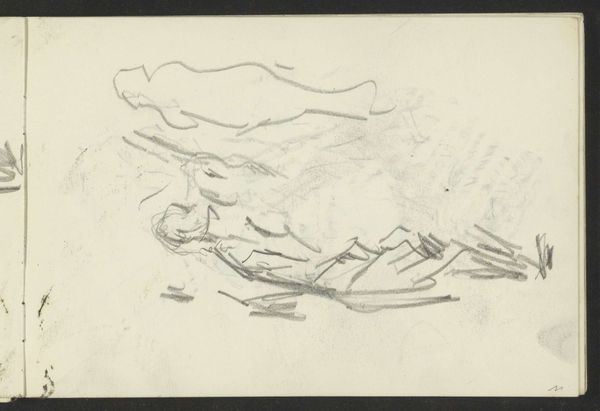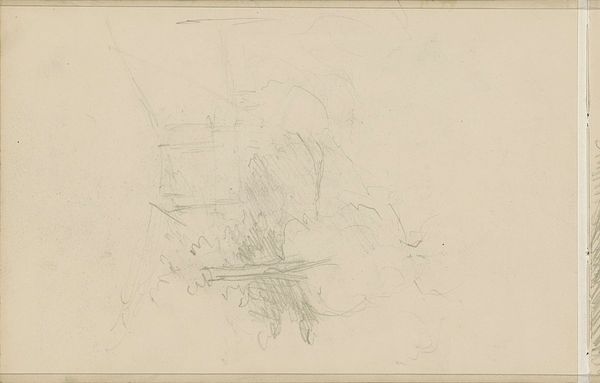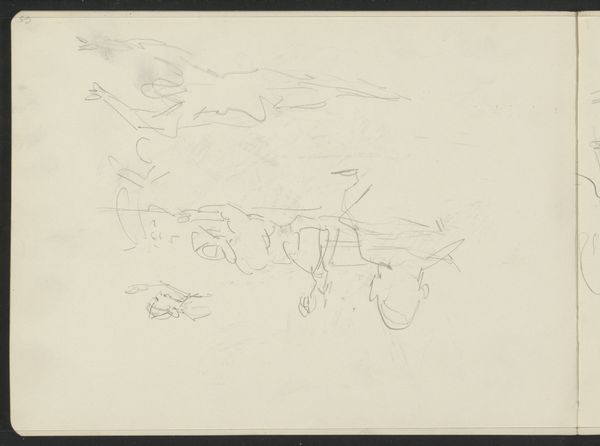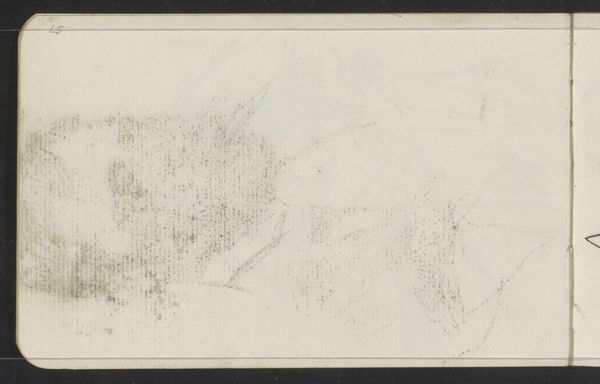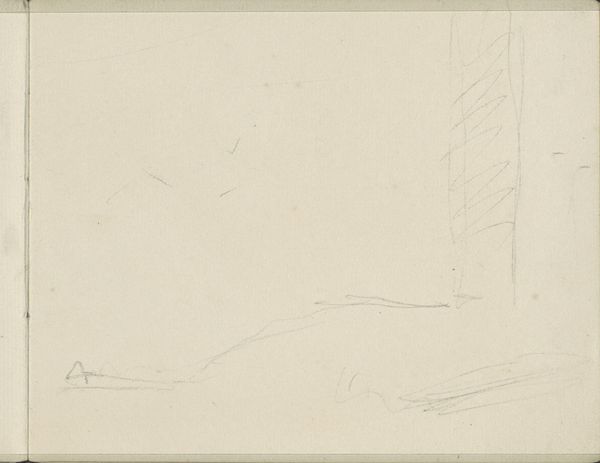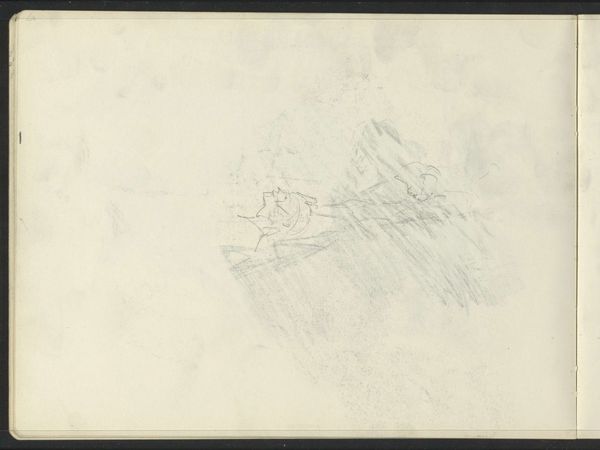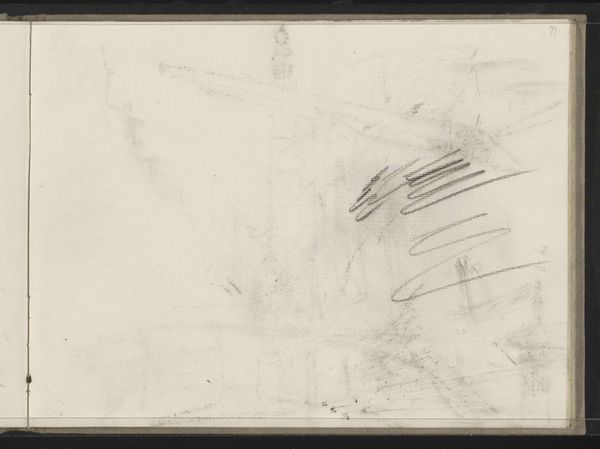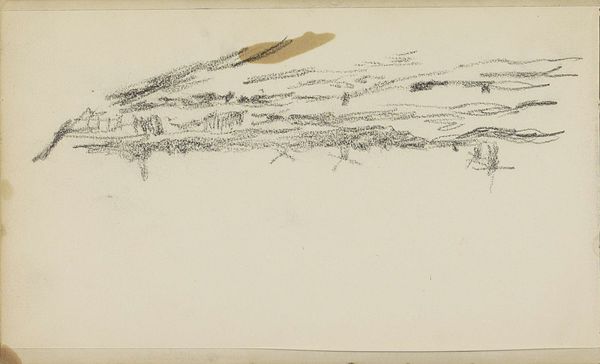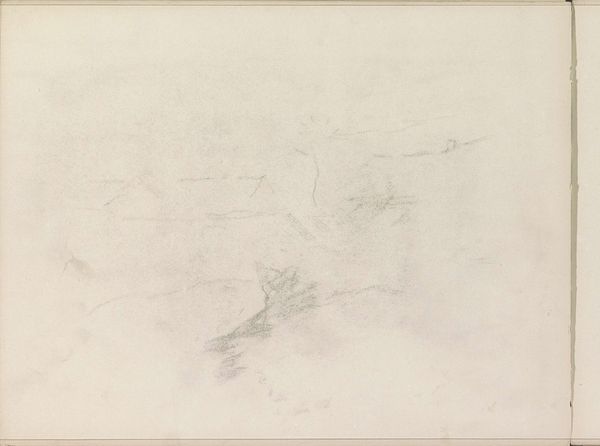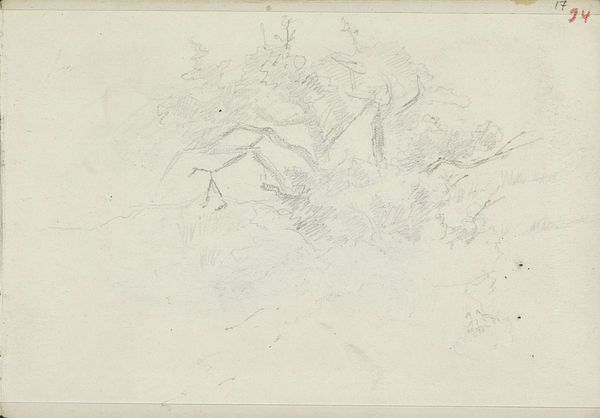
Copyright: Rijks Museum: Open Domain
Editor: So, this is Isaac Israels' "Figuurstudies" or "Figure Studies," a pencil drawing on paper from around 1915-1925, currently held at the Rijksmuseum. It feels like peeking into the artist's private sketchbook. What do you see in this piece? Curator: It feels like glimpsing a moment of quiet observation, doesn’t it? These aren't posed portraits, but rather figures caught in fleeting, personal moments. I’m particularly drawn to how Israels uses minimal lines to suggest form and emotion. Do you get a sense of vulnerability or perhaps intimacy from these figures? Editor: I think so. The sketchiness definitely contributes to that feeling. They seem very exposed. I wonder about the woman with her hands covering her face... is she in distress? Curator: It could be interpreted that way. However, consider the cultural context. The early 20th century saw a shift in how artists depicted the human form. It moves beyond academic precision and steps toward capturing the psychological state. Perhaps she's not in distress, but simply lost in thought or shielding her eyes from a glare. These images are like memory, where detail fades, leaving only the essentials to convey the deepest emotions. Editor: That's interesting! So, the ambiguity is deliberate? It allows for a more personal connection with the viewer, a projection of our own feelings? Curator: Precisely. Israels masterfully uses the power of suggestion to trigger a shared cultural memory, inviting us to fill in the gaps and co-create the narrative. Notice the almost casual arrangement of the figures on the page—how does this inform your understanding? Editor: It makes it feel even more intimate, less staged. It's like he's just quickly jotting down observations as they come to him. I appreciate how much can be conveyed with so little. Curator: Exactly. These initial sketches are not precious; they embody that transitional state between observation and conception. Art that connects with people. A connection between our humanity, between seeing each other in a light pencil stroke, so that art and our lives remain fluid. Editor: It definitely gives me a new appreciation for the power of sketching! I'll look at works on paper differently going forward.
Comments
No comments
Be the first to comment and join the conversation on the ultimate creative platform.
